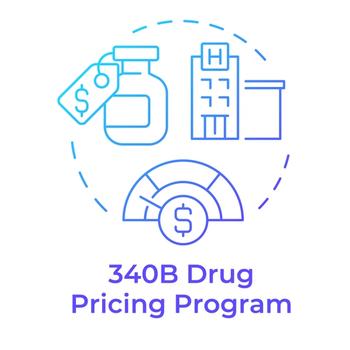
OptumRx’s Top Pipeline Drugs to Watch This Fall
Arash Sadeghi, Pharm.D., discusses three drugs in development, which treat a rare kidney disease, hemophilia B, and an advanced form of age-related macular degeneration.
The top three drugs that are expected to be approved by the FDA by the end of this year include two orphan drugs, OptumRx executives noted in a
“We are seeing an increase of new orphan drugs and expect this trend to continue, if not accelerate. This is important since orphan drugs are priced more than 30 times higher than non-orphan drugs,” wrote Sumit Dutta, M.D., chief medical officer at OptumRx, in the PBM’s Drug Pipelines Insight Report.
Formulary Watch caught up with Arash Sadeghi, Pharm.D., clinical pharmacist at OptumRx, to discuss the top three drugs to watch:
- Travere Therapeutics’ sparsentan to treat patients with immunoglobulin A (IgA) nephropathy, a disease of the kidneys;
- CSL Behring’s etranacogene dezaparvovec to treat patients with hemophilia B; and
- Appelis’ Empaveli (pegcetacoplan), which was aproved in May 2021 to treat patients with paroxysmal nocturnal hemoglobinuria, a rare disease of the blood. Empaveli is being studied to treat geographic atrophy, a severe form of dry age-related macular degeneration.
Formulary Watch: What are the most important characteristics of each of the top three drugs?
Sadeghi: For sparsentan, there is an unmet need for additional effective immunoglobulin A (IgA) nephropathy treatments, and sparsentan demonstrated promising improvements compared with established alternative treatments for IgA nephropathy. If approved, orphan drug sparsentan would potentially be the first non-steroidal drug approved for treatment of IgA nephropathy, and as an alternative to steroids, which are often used in high-risk patients. [However], prolonged use can cause problematic side effects including immunosuppression, osteoporosis and other toxicities.
Sparsentan is also in development for treating another rare kidney disease with an unmet need, focal segmental glomerulosclerosis.
Regarding etranacogene dezaparvovec, the lifetime costs for current standard of care (i.e., factor replacement therapy) for patients with severe hemophilia B are extremely high. If approved, etranacogene dezaparvovec would be the first one-time gene therapy for hemophilia B — actually, for any hemophilia.
In trials, etranacogene dezaparvovec significantly reduced the need for FIX replacement therapy, with 98% of patients treated with a full dose discontinuing prophylactic factor replacement therapy. However, the durability of response is unknown and the cost for a one-time dose is likely to be greater than $2 million.
Pegcetacoplan would potentially be the first FDA approved treatment for geographic atrophy, a severe form of dry age-related macular degeneration (AMD). The condition affects about 1 million people in the United States and is a leading cause of blindness. Due to the high unmet need, pegcetacoplan is anticipated to generate more than $900 million in revenue in the United States by 2032.
While pegcetacoplan is likely to be first to market, Iveric bio has also reported positive topline results for Zimura (avacincaptad pegol) for geographic atrophy and could come to market by the first half 2024.
Formulary Watch: Please expand on the significance of orphan drugs being approved by the FDA.
Sadeghi: A defining pharmacy trend in recent years has been the development and availability of new orphan drugs to treat ultra-rare conditions. In three of the last four years, the number of novel orphan drugs approved by the FDA exceeded non-orphan drugs, and the same pattern is projected to occur by the end of 2022.
It is to be expected that orphan drugs will continue making up an even larger percentage of prescription sales. Since orphan drugs are priced significantly higher, and more are coming to market, this will have life-altering impacts and cost implications for clients and members.
Payers determine how to cover the cost of these high-priced medications and control spend across a small patient population, which can consume disproportionately large percentages of total pharmacy drug costs. In addition, long term safety and efficacy outcomes, particularly related to the durability of response or cure, have often not been fully established for many of these drugs at the time of their FDA approval.
This is clearly a focus in the drug development pipeline, and we expect that a high proportion of FDA approvals will be orphan drugs for rare diseases (around 50%) for the foreseeable future. Although their target populations are very small, and individually their financial impact can be modest or small, over time the large number of overall approvals will ultimately translate into a sizable footprint.
Newsletter
Get the latest industry news, event updates, and more from Managed healthcare Executive.


















































